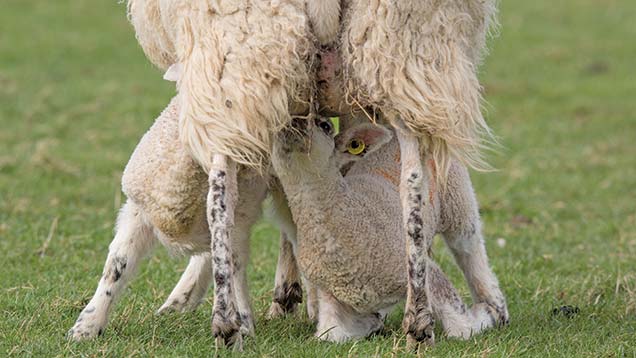Ask the vet: Udder problems in ewes
 © Tim Scrivener
© Tim Scrivener Ask the vet is a regular feature where readers’ questions are answered by vets at Westpoint Veterinary Group.
In this edition, one worried reader asks what is causing two udder syndromes in otherwise decent ewes.
Q. We farm a mixed breed flock of 150 ewes. Acute mastitis is sometimes seen (usually related to bad weather) but it is a rare problem. However, two other udder syndromes do cause wastage of otherwise decent ewes. These are:
- Nodules in one teat. In spite of culling affected ewes in the autumn, I generally get at least one new case surprising me in the spring – just as the ewe concerned has lambed-down twins.
- Frozen udders. Just after the ewe has lambed, the udder dries up and becomes hot and hard. The ewe is not ill and does not object to the lamb(s) trying to suck. No pus is produced. The udders look and feel normal at weaning. I have even had an affected ewe milk normally the next year.
A. You have two tricky-sounding problems here. Without having an idea of the appearance of the nodules it is difficult to advise specifically on what they might be.
It sounds from your description that the nodules are within the actual teat itself, not the surface of the skin, so they could be lesions associated with bacterial infection.
If milk production is also affected then chronic, historic mastitis is likely to be the underlying cause and the nodules are abscesses or scars. Taking photos and showing them to your vet might help narrow it down.
See also: Hairloss worry in cattle
Check the temperatures of the ewes with frozen udders are normal (<39.9C) and always give an anti-inflammatory drug alongside antibiotics if mastitis is suspected.
You could try asking your vet to prescribe Oxytocin-S, which is a drug that stimulates milk let down, sometimes helpful in cases of mastitis.
If this injection results in milk let down and the udder returns to normal, it is likely to be a hormone problem affecting these individual animals.
If there is no response to the treatment, there may be an unusual mastitis affecting these ewes. If you can extract any milk at all it should be sent for culture to establish the cause.
Cecilia Corbett is a vet at Westpoint Veterinary Group
Disclaimer: Any advice given is based on the information provided and cannot necessarily apply to situations where other factors exist. If the advice required relates to a specific animal or disease problem the reader should contact their own vet or advisor with appropriate knowledge of the particular circumstances.
